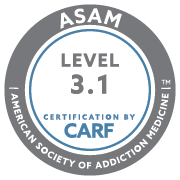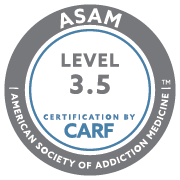Technology is something that we all have gotten more adept at using, whether we like it or not. “Zooming” is now a thing. I remember when I got a job after graduate school that required me to have a cell phone, I felt soooo sophisticated (it was a flip phone and there was an antenna that I pulled out for better reception). My relationship with tech goes back a little ways…
I can also remember when I was in elementary school and my dad really, really wanted a home computer for Christmas. My mom and I did get him a computer, but first we made him one out of cardboard with a drawn on keyboard. He was not impressed, but the look on his face was hilarious! As a high schooler, my dad insisted that I be proficient in typing; I had to practice typing more than I had to practice parallel parking (both of which I was pretty sure were ridiculous things to learn… no one would ever use typing as a skill and I was sure I’d be rich and famous and would have a driver. My dad did not buy either of my lines of reasoning). When I was in college, my parents wanted me to have my own laptop (not to date myself, but this was before it was normal to have your own computer). They had a “Gateway” (anyone else remember those cow-skin-black-and-white boxes???) delivered to me and I was the coolest kid in the dorm (until 11pm when I yelled at my dorm-mates to be quiet and go to bed).
My own kids (13-year old twin boys) are known as “digital natives.” Technology has been a part of their lives since the beginning. Using technology to connect, communicate and learn is not abnormal for them. Zoom, cell phones, tablets and computers are all integrated into their daily lives. Even before COVID-19, they used web-based programs in their school and knew how to use a tablet and laptop. Instead of an encyclopedia (or, God forbid, just not knowing something) we “Google” it. Where I used to play outside or read a book, they play X-box and want to be able to “game” with their friends. (Funny story: they really, really wanted an X-box for Christmas a couple years ago. I got a box and drew a huge “X” on it and gave it to them. The looks on their faces! Pretty sure they thought I was the dumbest mom on the planet. Even my husband, who is more anti-tech than I am, thought I was being cruel. We did get them a real X-box for Christmas that year, but I will forever remember the looks on their faces when I said, “You guys said you wanted an X-box! I thought that was what you wanted!” LOL. Priceless). They do not understand why I do not think they need iPhones; the argument “I didn’t have one when I was your age” only solicits them looking at me as if I am from Mars.
So, gung-ho technology! Maybe. Maybe not. Technology is a fabulous tool. It allows us to do many things easier, faster and (often) cheaper. But there is a price. It is often thought that technology impairs social growth and skills (my grandma used to say that TV “rots your brain”), but research has not born that out completely. Particularly for children with learning disabilities and autism, technology has actually provided useful tools to help children learn and communicate. I could argue that it may actually improve diversity and global awareness of issues: we are more aware of people on the other side of the world and even down our own street because we are all connected through the internet. We can connect with people that we’ve lost touch with via Facebook and buy our groceries without ever leaving our house. It has certainly made our lives more “normal” due to COVID-19. For the most part, we were still able to engage in work and school, even if it was in a modified way. It has allowed us to talk to our families since we cannot visit (although, I must say, after “Zooming” with patients all day, the very last thing I want to do is “Zoom” with my family… the only thing I want to do is “zoom” to bed and sleep!).
Technology has allowed me to seamlessly continue to see my clients; telehealth has been used for decades (although it is more prevalent in traditional medicine versus mental health and substance use treatment). Even prior to COVID-19, technology has allowed me to see clients that do not live in Billings. It also allows me to provide quality treatment to individuals living in rural Montana that do not have local access to mental health and/or substance use counselors. Now that it is more mainstream, I foresee us continuing to use technology (in the form of “telehealth”) to provide services, even within the Billings city limits. Telehealth practices are allowing us to integrate people from outside Billings into our group therapy that previously required travel to Billings. Families that needed to take days off of work and pay for gas and hotels in order to participate in our “Family Week” can now do so virtually. I’ve also had clients that live in Billings ask to continue to use telehealth for various reasons including cutting down on having to take time away from work and drive to my office, reducing fear of embarrassment that someone they know will see them walk into my office (we’ll save stigma for a different blog post), and feeling it is “easier” to share difficult things over a camera versus face-to-face. Technology is a great tool with many benefits, and I’m glad we have it. I also want us to use caution: a hammer is also a tool, but it is not always the tool that you should or would use.
For some people, telehealth is not the best venue for receiving care. Face-to-face therapy can still happen during COVID-19 when we take the recommended precautions. For some, a blend of face-to-face and telehealth is the best fit. It is imperative that we, as clinicians and consumers, assess the needs and match it appropriately with provided services. While technology is a huge benefit in our lives, we also need to be aware that it is not always the best fit. When I work with my clients, I want them to have a lot of “tools in their toolbox” to deal with the stressors and boredom of everyday life, not just a hammer.
If you would like more information on how the available telehealth and in-person options Rimrock offers to address substance use and mental health needs can help you or someone you love, please call 800-227-3953 or complete our online request form and a member of our staff will reach out to you. Normal admission hours are between 8:00 am and 5:00 pm Mountain Time, Monday through Friday. However, we do have staff available anytime to take your call.





